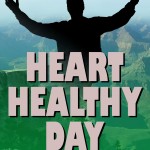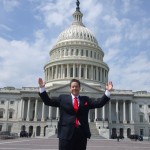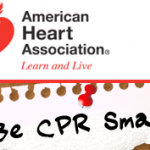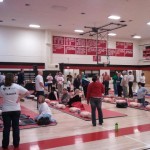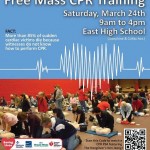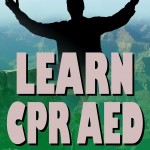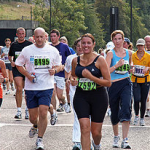
Keith Ahrens
Health tips and discussions, motivational articles and positive lifestyle coaching from Lifestyle Change Expert, Keith Ahrens
 If thinking about changing your lifestyle is putting too much pressure on you then don’t think about it:)
If thinking about changing your lifestyle is putting too much pressure on you then don’t think about it:)
If you feel like this or know someone who is then you’re probably thinking too “big”. Think smaller.
Too often we think of the task at hand as overwhelming an un-doable. It’s a very legitimate fear.
You need to think “smaller” and what little things you can do today that are different than yesterday but knowing you can’t fail at them. Something that is healthier perhaps. It could be activity or nutrition or both. This way of thinking is certainly an easier way to build momentum for yourself. Momentum is a great thing once you start moving. It can also be real bad when we’re moving in a poor direction.
Perhaps it’s walking to the front door or to the mailbox each day or taking the stairs at work. Maybe it’s ordering a sandwich with mustard instead of mayonnaise or a salad with plain balsamic vinegar instead of blue cheese dressing. Try grabbing a bottle of water instead of a soda. You know, little things.
If someone told me 4 years ago that I had to lose 200 pounds, well let me tell you I would have tuned them out real quick. The fact of the matter is I didn’t need to lose 200 pounds, I needed to lose 5 and then another 5 and so on. I just needed to be able to walk to the mailbox before I could walk around the block. You get the idea. Little things, doable things, can’t fail at things. – Keith
That was four years ago. Today, Keith is 200 pounds lighter. He’s a dynamic advocate and spokesperson for the American Heart Association, sharing his story to help others avoid the denial which almost killed him.
Keith neglected his health, had terrible eating habits and avoided physical activity for years. After experiencing classic symptoms of heart disease – shortness of breath, dizziness and nausea – he finally went to a doctor in early 2007. Keith was having a heart attack and a triple bypass operation was required to correct it.
He explains, “After I got that second chance which many heart attack victims never have, I saw it as a great opportunity to help others by putting myself out there as a voice for change.”
It was a new beginning. He changed his eating habits, started walking for exercise and participated in his first Start! Heart Walk in 2009. His dramatic weight loss and energetic, new outlook on life won him the Heart Walk Lifestyle Change Award that year. He was the top Walk fund-raiser in 2010 and is on the planning committee for this year’s event.
Keith put his communications talents to work writing a book to inspire others to follow his path to healthy living.Outrunning My Shadow: Surviving Open-Heart Surgery and Battling Obesity. The Decision to Change My Life is the title of his book and he maintains a webpage to project his message of self-help. Keith became a Certified Fitness Trainer and Specialist in Fitness Nutrition and began using social media networks to encourage others to improve their lifestyle.
A member of our grassroots network, Keith speaks out often on the local and state level and recently returned from the AHA’s You’re the Cure Congressional Lobby Day in Washington, D.C. Keith has also earned his Basic Life Support (BLS) Instructor Certification from our Emergency Cardiac Care (ECC) program.
“If someone in your life is affected by heart disease,” Keith says, “do something. Get involved with the American Heart Association – help save lives.”
 You’re the Cure on the Hill Lobby Day 2011
You’re the Cure on the Hill Lobby Day 2011
American Heart Association
Please share this video link with one and all – Keith
 Just thinking about the possibilities to finding a Cure and Ending Cardiovascular Disease.
Just thinking about the possibilities to finding a Cure and Ending Cardiovascular Disease.
Can one man, women or child really make a difference?
Will your voice be heard?
My fight didn’t end on Lobby Day… In Fact, It Just Began.
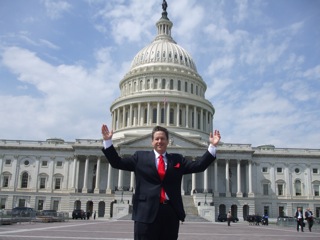 What a Day.
What a Day.
Met with Congressmen and Senators to cap off an incredible 2 days at the American Heart Associations You’re the Cure on the Hill Lobby Day.
Become part of the You’re the Cure Network and make a difference in your community, your state, your country.
Visit YoureTheCure.org today
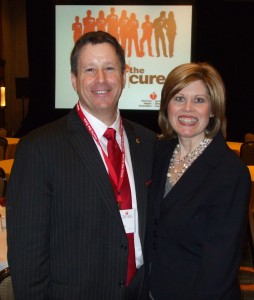 What an honor to meet Nancy Brown, CEO, of the American Heart Association.
What an honor to meet Nancy Brown, CEO, of the American Heart Association.
Truly one of Americas top CEO’s
You’re the Cure on the Hill Lobby DayApril 11, 2011
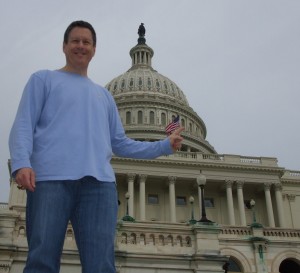 I grew up in Potomac, Maryland just 20 minutes from the White House. I’ve been to all the museums and visited all the landmarks many times but this trip will be different.
I grew up in Potomac, Maryland just 20 minutes from the White House. I’ve been to all the museums and visited all the landmarks many times but this trip will be different.
Driving down Canal Road from Potomac through Georgetown and onto Pennsylvania Avenue to Constitution Avenue and seeing our great Capitol in front of me I felt something special.
As I venture into the hallowed halls of the Congress and the Senate to meet our legislatures this will be the first time I feel like I can and will make a difference for the millions of adults and children who have cardiovascular disease and those who will follow.
Perhaps if the legislation we’re advocating for today was passed 30 years ago my Heart Disease wouldn’t have been as severe.
Who knows what may have been… but now I know what can be.
This is going to be an interesting trip to say the least.
You’re the Cure on the Hill Lobby Day. April 11 & 12.
I’m so ready to speak with our legislatures and meet other advocates, medical experts, researchers and fellow survivors.
Over 350 are expected to participate for the American Heart Association.
Get counted. Click Here – Join the You’re the Cure Network and make a difference. – Keith
 Do You Know Your Numbers? Mine are below.
Do You Know Your Numbers? Mine are below.
A look back at 4 years of lab results.
I’m still working on the HDL. It’s been as high as 49.
The ratio is very important. The lower the better. The ratio is your total cholesterol divided by your HDL.
Always room for improvement for sure. It just goes to show you that we can change our numbers.
The only prescription medication that I’m on is Lipitor.
Stay focused on the prize. The prize is YOUR HEALTH.
Random Numbers For Keith April 2007 April 2011
Total Cholesterol – 300 128
LDL Bad Cholesterol – 245 76
HDL Good Cholesterol – 33 40
Ratio – 9.09 3.2
Triglycerides – 250 54
Blood Pressure – 146/96 110/72
Pulse – 88 64
 I was selected to by the American Heart Association to attend the You’re the Cure on the Hill Lobby Days in Washington D.C. next week.
I was selected to by the American Heart Association to attend the You’re the Cure on the Hill Lobby Days in Washington D.C. next week.
The event will include more than 350 Advocates, Medical Researchers, Doctors, and Survivors.
I was asked to represent the AHA and attend as a Survivor, National Advocate, and Heart Hero.
We’ll be on Capitol Hill to share our stories with our Senators and Congressmen and ask our legislators’ to support the important legislation that would help prevent heart disease and stroke.
We’re asking for support and passage of the FIT Kids Act and Safe Routes to School legislation, which would help prevent childhood obesity by promoting quality physical education and safe walking and bicycling paths to schools– and asking for vital funding for medical research that can lead to improvements in the prevention and treatment of heart disease and stroke.
I’ve included some items we’ll be “Asking” for lobbying for with bullet points below from the AHA for our Lobby Day and the Facts to back them up.
ASK: Please appropriate $35 billion for the NIH in 2012 to support research that (1) improves health, (2) spurs economic growth and innovation, (3) creates jobs, and (4) advances science to help find better ways to prevent and event cure heart disease and stroke.
Fact: NIH invests a mere 4{1ee8873d3da54571ef77633feec9b2f18618b0dba2f28faf42edb28003d1c6f7} of its budget on heart research and 1{1ee8873d3da54571ef77633feec9b2f18618b0dba2f28faf42edb28003d1c6f7} on stroke research even though heart disease, stroke and other forms of cardiovascular disease remain the No. 1 and most costly killer of Americans. These funding levels are not commensurate with scientific opportunities, the numbers afflicted, and the economic toll this disease exact on our Nation.
Fact: A large portion of NIH research is focused on reducing heart disease and stroke risk factors, including high blood pressure and cholesterol, tobacco use, and physical activity.
Fact: NIH funds research in every state and in 90{1ee8873d3da54571ef77633feec9b2f18618b0dba2f28faf42edb28003d1c6f7} of congressional districts. The typical NIH grant supports about 7 mainly high-tech full-time or part-time jobs. In one year, every dollar that NIH distributes in a grant returns more than $2 in goods and services to the local community.
REMEMBER: Research remains our best hope to prevent and even cure heart disease and stroke.
ASK: Please co-sponsor the FIT Kids Act.
Fact: Childhood obesity in the United States is an epidemic. About 1 out of every 6 children and adolescents ages two to 19 are considered obese. As these obese children grow into adulthood, they have a much greater risk of developing and dying from heart disease. Their poor health also pushes up medical costs and lowers our military preparedness.
Fact: Only 3.8{1ee8873d3da54571ef77633feec9b2f18618b0dba2f28faf42edb28003d1c6f7} of elementary, 7.9{1ee8873d3da54571ef77633feec9b2f18618b0dba2f28faf42edb28003d1c6f7} of middle, and 2.1{1ee8873d3da54571ef77633feec9b2f18618b0dba2f28faf42edb28003d1c6f7} of high schools provide daily physical education or its equivalent for the entire school year. Twenty-two percent of schools do not require students to take any physical education at all.
Fact: National guidelines recommend that children engage in at least 60 minutes of physical activity most days of the week – and 30 minutes should be during the school day.
REMEMBER: Schools need to be a part of the solution to the childhood obesity epidemic and this includes telling parents what is provided in the way of physical education during the school day.
ASK: Please support the Safe Routes to Schools program at current funding levels ($183 million/year) in the next Transportation bill.
Fact: Just 13{1ee8873d3da54571ef77633feec9b2f18618b0dba2f28faf42edb28003d1c6f7} of children walk or bike to school today, down from nearly 50{1ee8873d3da54571ef77633feec9b2f18618b0dba2f28faf42edb28003d1c6f7} in 1969. A California study showed that schools that received infrastructure improvements through the Safe Routes to School program increased walking and bicycling by20 to 200{1ee8873d3da54571ef77633feec9b2f18618b0dba2f28faf42edb28003d1c6f7}.
Fact: Walking one mile to and from school each day is two-thirds of the recommended sixty minutes of physical activity a day. Children who walk to school have higher levels of physical activity throughout the day.
REMEMBER: More than 10,000 schools and communities across all 50 states have benefited from Safe Routes to Schools, which has helped build sidewalks, pathways, and safe street crossings. The program creates opportunities for daily physical activity and improved health for kids and for other members of the community.

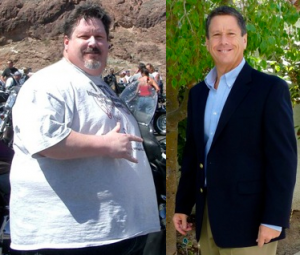 Keith Ahrens of Las Vegas inspires lifestyle change
Keith Ahrens of Las Vegas inspires lifestyle change